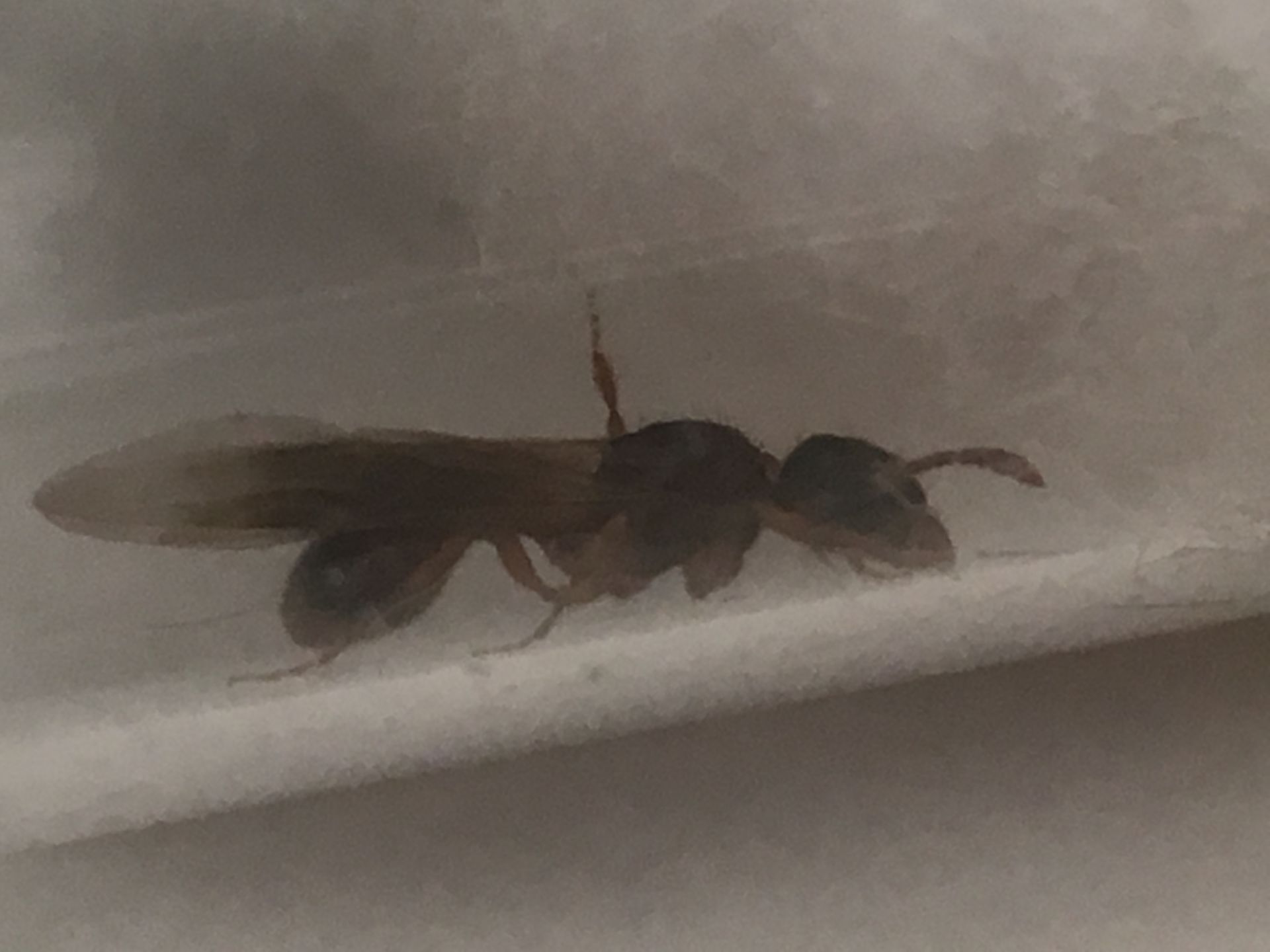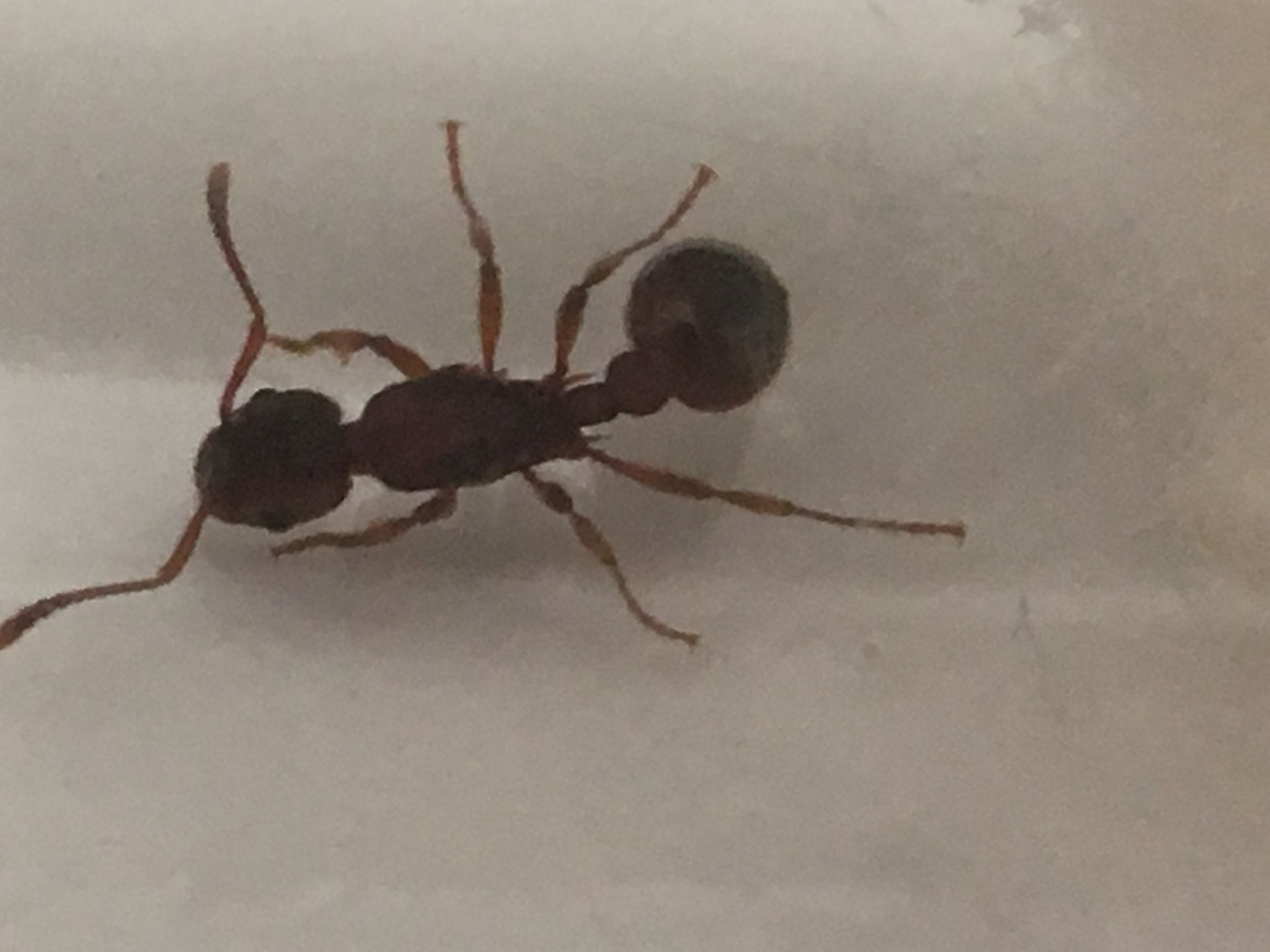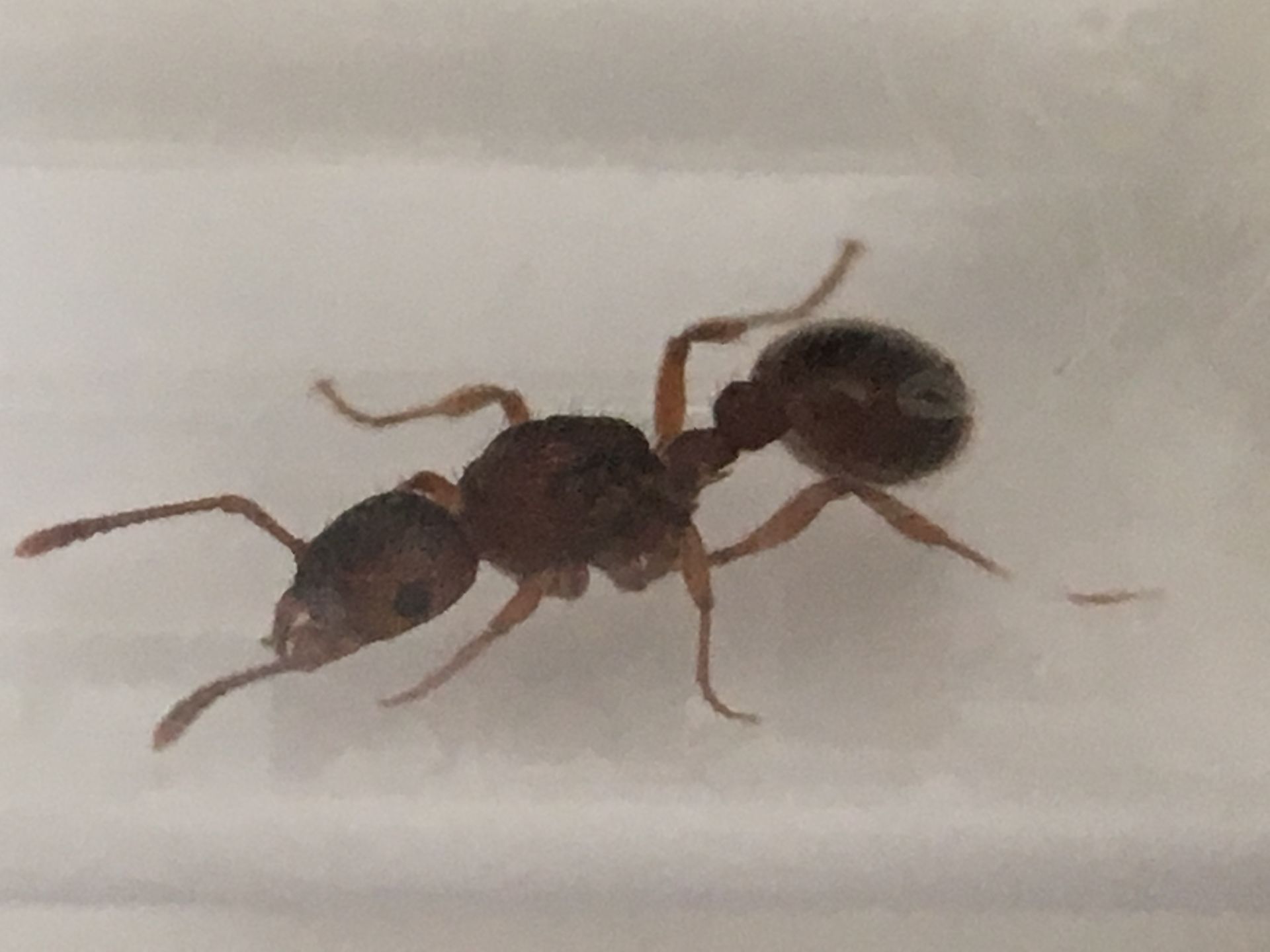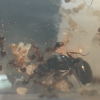Some pictures



Thank you




Myrmica sp.
"God made..... all the creatures that move along the ground according to their kinds. (including ants) And God saw that it was good. Genesis 1:25 NIV version
"God made..... all the creatures that move along the ground according to their kinds. (including ants) And God saw that it was good. Genesis 1:25 NIV version
Edited by Broncos, March 30 2020 - 7:20 PM.
Currently Keeping:
Pogonomyrmex Californicus Bicolor & Concolor
Pogonomyrmex Subnitidius
Camponotus Sansabeanus
how large are they? it's too early for myrmica to be flying, but stenamma fly around this time, and look very similar to myrmica. If they're ~4mm, they're stenamma.
Though there is a point regarding the nuptial flight season the over all externally discernible characters would lead me to say a Myrmica species. My position is based on the petiole widths as seen dorsally which in Stenamma are generally much more slender and not as wide as those in Myrmica. Pilosity might be important but that may vary in species in either genus. I am also considering the overall cephalic size with regard to the rest of the of body which in gynes of Myrmica appears to be larger than in Stenamma. If you could get a mm body length measurement that would be good too. Anyway, may you take good care of her.
Stenamma also have a prominent petiolar "stem" which is lacking in other Myrmicines. I'd definitely say this is Myrmica. The propodeal spines and sculpturing suggest so.
Currently Keeping:
Camponotus chromaiodes, Camponotus nearcticus, Stigmatomma pallipes, Strumigenys brevisetosa, Strumigenys clypeata, Strumigenys louisianae, Strumigenys membranifera, Strumigenys reflexa, Strumigenys rostrata
"God made..... all the creatures that move along the ground according to their kinds. (including ants) And God saw that it was good. Genesis 1:25 NIV version
0 members, 0 guests, 0 anonymous users